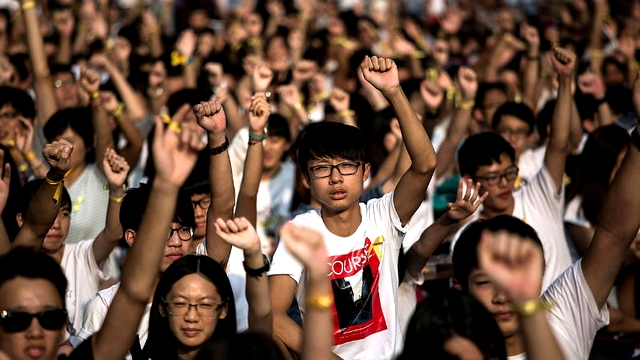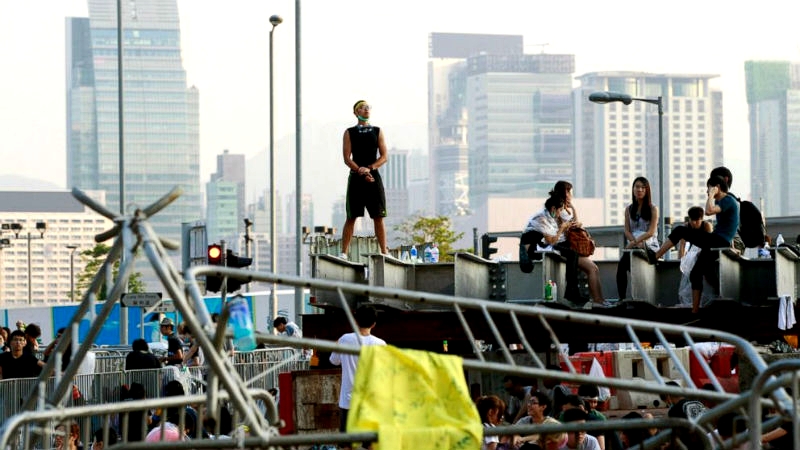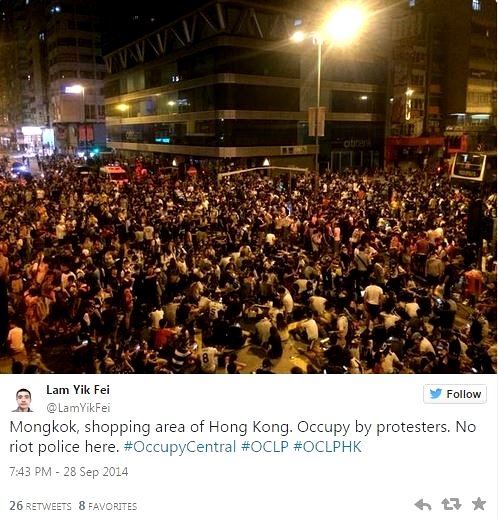Occupy Hong Kong protesters are locked in a technology arms race with the Chinese government

Thousands of protesters have flooded into the heart of central Hong Kong over recent days to demonstrate against the Beijing government's plans to phase out the semi-autonomous province's democratic elections by 2017. The campaign seeks to blockade Hong Kong's financial center, and represents the first major challenge to the rule of the new Chinese President, Xi Jinping.
For anyone confused by the protests, here's a bit of background: when the UK handed the territory of Hong Kong back to China in 1997, the Chinese government agreed to a policy of "one country, two systems" that allowed the city a high degree of control over its own affairs and kept in place civil liberties unseen on the mainland. It also promised the city's leader would eventually be chosen through "universal suffrage". That appears to not have been entirely true, and it's got thousands of people taking to the streets.
As with protest movements around the world, from Gaza to the UK, from Thailand to New York, technology has played a major part in civil unrest and the organization of protest. Let's look at some of the ways tech has defined the #OccupyHongKong protest movement, and how the constant arms race between repression and freedom of expression is holding up. Here's three ways we've noticed that technology has impacted the protests.
1. Instagram
Over the weekend, the Chinese government took the unprecedented step of censoring Instagram on mainland China. Mostly used for sharing heavily-filtered images of one's own food, Instagram accounts belonging to protesters were soon filled with images of massing crowds, clouds of tear gas and suited-up riot police in Hong Kong's Central financial hub.
As of Sunday, monitoring services such as blockedinchina.net and greatfire.org showed that Chinese mainlanders do not have access to Instagram.

While the image-sharing site is still available in Hong Kong itself, it seems Chinese censors have taken steps to ensure that the Chinese mainland isn't flooded with pictures of thousands of protesters. Particularly of concern are the images of gas-masked police officers firing tear gas and pepper spray into crowds of peaceful protesters, which evoke the painful and repressed memories of the brutally crushed Tienanmen Square protests of 1989.
Of course, many Internet users in China are already well-versed in the need for a virtual private network (VPN) to access certain banned pages like Facebook and Twitter.
2. Twitter and Weibo
Microblogging sites like Twitter and Weibo have been instrumental in the spreading of #OccupyCentral message. While the hashtag has been blocked from the heavily-monitored Chinese microblogging site Sina Weibo in the wake of the protests, the trend has skyrocketed on Twitter.
You can also follow the protests' official Twitter account, @OCLPHK, for updates and pictures from Central Hong Kong.

While Twitter is blocked in China, some Chinese users access it through a VPN, and images from the protest have inundated users' Twitter feeds over recent days.
3. Apps to break the communications blackout
Amid rumors of a complete communications blackout of all phone and Internet coverage, protesters in Hong Kong have taken to an app called FireChat. The app uses technology from the Wi-Fi tethering whizzes at Open Garden to go off the grid, allowing conversations with anyone with 200 feet of your location using absolutely no network coverage of mobile data. Using Bluetooth and Wi-Fi networks to hop between communicants, FireChat is also fully anonymous, which is a plus given the circumstance.
This kind of peer-to-peer communication has caught people's imagination during the protests, and some 100,000 people have downloaded the application for smartphones over the last 24 hours in Hong Kong, according to the developers.
They also claim that the application was used simultaneously by around 33,000 people between Sunday and Monday morning. The live and anonymous discussion groups set up on FireChat can gather as many as 10,000 people simultaneously. If you're interested, you can download the app here.
Published under license from ITProPortal.com, a Net Communities Ltd Publication. All rights reserved.
